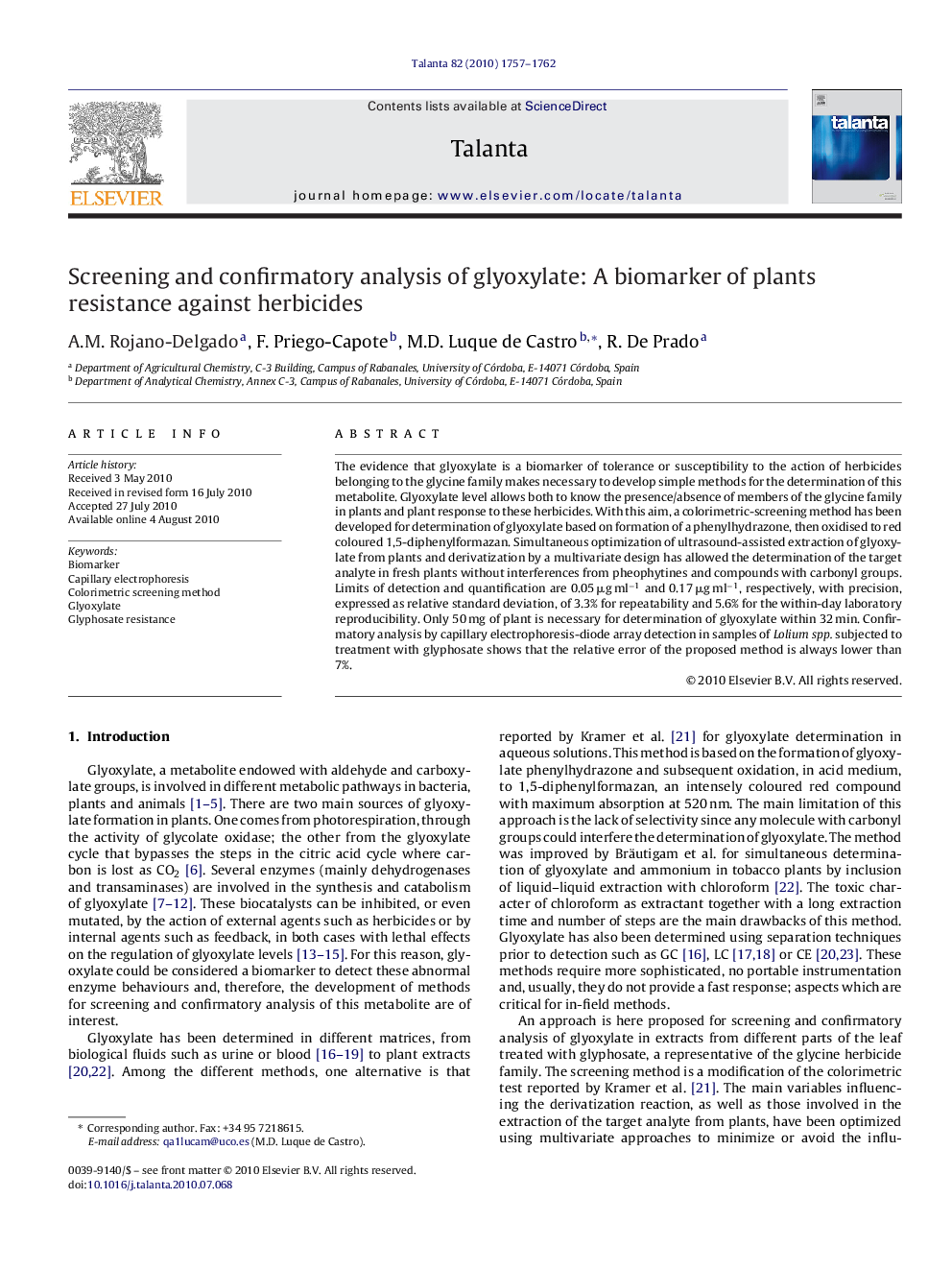| Article ID | Journal | Published Year | Pages | File Type |
|---|---|---|---|---|
| 1246196 | Talanta | 2010 | 6 Pages |
The evidence that glyoxylate is a biomarker of tolerance or susceptibility to the action of herbicides belonging to the glycine family makes necessary to develop simple methods for the determination of this metabolite. Glyoxylate level allows both to know the presence/absence of members of the glycine family in plants and plant response to these herbicides. With this aim, a colorimetric-screening method has been developed for determination of glyoxylate based on formation of a phenylhydrazone, then oxidised to red coloured 1,5-diphenylformazan. Simultaneous optimization of ultrasound-assisted extraction of glyoxylate from plants and derivatization by a multivariate design has allowed the determination of the target analyte in fresh plants without interferences from pheophytines and compounds with carbonyl groups. Limits of detection and quantification are 0.05 μg ml−1 and 0.17 μg ml−1, respectively, with precision, expressed as relative standard deviation, of 3.3% for repeatability and 5.6% for the within-day laboratory reproducibility. Only 50 mg of plant is necessary for determination of glyoxylate within 32 min. Confirmatory analysis by capillary electrophoresis-diode array detection in samples of Lolium spp. subjected to treatment with glyphosate shows that the relative error of the proposed method is always lower than 7%.
